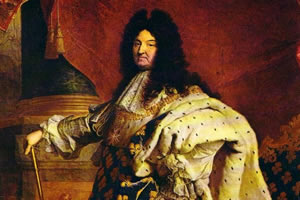English absolutism was the period of strengthening the monarchic state of England, which occurred after the Hundred Years War (1337-1453) and the War of the Two Roses (1455-1485). With this strengthening, English society created the conditions that elevated it to the category of imperialist power, with the colonization of North America, dominance in the mercantilist trade and laying the foundations for the future revolution industrial.

Henry VIII subjected Parliament and gave the absolutist characteristics to England
English absolutism began with the Tudor dynasty (1485-1603) and ended with the end of James II's rule in 1688, when William of Orange invaded England, swore the Bill of Rights and installed the parliamentary monarchy to replace the monarchy absolutist. In these two hundred years of English history, the dispute for power was related to the religious influences on the monarchs and the consequences in the organization of the English State. Furthermore, the structural conditions of society were consolidated so that industrial capitalist development could take place from the 17th century onwards.
During the Tudor dynasty we can highlight the governments of Kings Henry VIII and Elisabeth I as the most important. Henry VIII managed to subject the parliament of the nobility to the power of the king, giving the characteristics of absolutism to the English monarchy, in addition to of founding the Protestant Reformation in the country with the Act of Supremacy, which in 1534 founded the Anglican Church and took the lands of the Church Catholic. In the reign of Elisabeth I, daughter of Henry VIII, English mercantilism was strengthened, consolidating the power of the English navy in the seas, especially after the victory over the Invincible Armada, of the Spanish king Felipe II, inaugurating the economic decay of the kingdom Spanish. In the area of navigation, Elisabeth I also encouraged piracy actions, even giving a title of nobility to the pirate Francis Drake. In addition, this dynasty left a real power consolidating and in agreement with the parliament, also guaranteeing a participation politics of emerging social groups linked to commercial and productive economic activities distinct from the rural aristocracy feudal.
Do not stop now... There's more after the advertising ;)
As Elisabeth I left no heirs, in 1603 James I (1603-1625), King of Scotland and a relative of Elisabeth I ascended the throne, starting the Stuart dynasty. Stuart governments were marked by disagreements with Parliament and by religious persecution of Catholics and Calvinist Puritans. The second and last Stuart king was Charles I (16825-1648), who, after closing the Parliament in 1629, in as a result of disputes over tax collection, he reopened it in 1640 to raise funds to fight in Scotland. Faced with the attempt by parliamentarians to contain the royal power, Carlos I tried to close it again, which triggered a civil war that literally cost him his head.
The Civil War between 1640 and 1649 pitted the defenders of the king (The Knights) against the defenders of Parliament (the Round Heads), led by Oliver Cromwell. The Roundheads won the war when they arrested Charles I and put him on trial by Parliament, which decided on his beheading. This parliamentary decision buried the idea of the divine right of kings. The Civil War also established the Republic, which would later have Cromwell as dictator, who would give during his government the contours of world power to England, mainly with the protection to English merchants given with the Navigation Acts in 1650.
Cromwell died in 1658, starting a period of instability and infighting in parliament that would only end in 1660 with the return of the Stuarts to power. The government of Carlos II (1660-1685) represented the end of the short English Republic and the attempt to impose Catholicism on its subjects. Charles II tried to re-establish absolutism in England by seeking to override the power of parliament. His son, James II, took the same path of strengthening absolutism, but was stopped in 1688. The parliament, dissatisfied with the birth of a Catholic heir to James II, fomented a revolt against he by proposing to William of Orange the accession to the throne, a historic event that became known as the Revolution Glorious. With this revolution English absolutism came to an end and the period of Parliamentary Monarchy in England was inaugurated.
By Tales Pinto
Graduated in History
Would you like to reference this text in a school or academic work? Look:
PINTO, Tales of the Saints. "English Absolutism"; Brazil School. Available in: https://brasilescola.uol.com.br/historiag/o-absolutismo-ingles.htm. Accessed on June 27, 2021.
General history

Absolutism, Absolutist States, National Monarchies, Absolutist Monarchies, Modern Age, Renaissance, bourgeoisie mercantile, feudal barriers, national symbols, unification of territories, Hundred Years War, War of Reconquest, theory absolute
